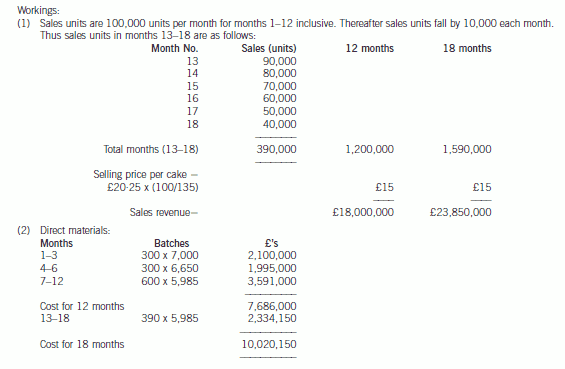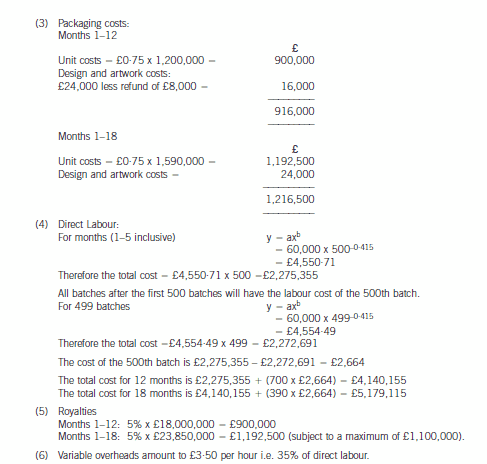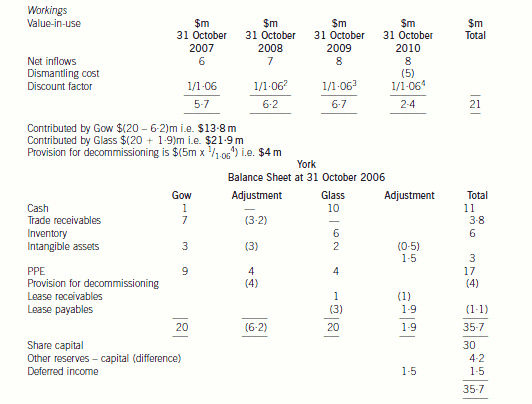如果海南省考生符合这些条件,那么ACCA证书就是为你量身订做的
发布时间:2020-01-09
听闻ACCA证书含金量高你就随大众就去报考?听闻ACCA考试难度很大然后你就放弃考试?这样的想法可是不对的,做什么事一旦决定了就要坚持下去,坚持不懈虽然不一定成功,但一定会不留遗憾的。虽然关于ACCA考试并不适合大家全部人都去报考,但下面这几类人去51题库考试学习网十分建议去报考的
1、高中及大专学历者
在职场上,因为学历的原因吃了不少的亏的人,建议可以去报考ACCA考试,因为随着财务金融领域对这方面要求的综合素质又比较高,那么通过ACCA来提高自己的学历以及职业竞争力,是一箭双雕的选择。
2、学校不好想要逆袭
那些不是985或者211院校的普通院校毕业的同学,其实学习ACCA,不仅能提高英语成绩,提高眼界和知识面,还能提高你的自信和思维能力,在面对名校人才竞争时,你未必争不过。
3、英国留学生、会计硕士
ACCA是英国的财会考试,如果你正好在英国留学,并且就读于会计相关专业,那你的优势可就大了,因为ACCA官方总部是在英国的,完全可以利用教材、地点之便参加ACCA考试。作为本土考试,在英国大学里学习相关知识,可以让你更快掌握英式的答题思路和逻辑思维,考起试来事半功倍。
4、想让大学生活更充实的大学生
大学是很多人人生最后能够专心学习的求学阶段,也是我们踏入社会、告别读书的过渡时期,大学不会再像高中那样几乎所有的时间都被占据,而是拥有很多个人闲暇时光。因此你可以利用自己的闲暇时间来学习和复习关于ACCA的内容,毕竟多考一个证书多一个选择嘛。如果你不好好利用,大学四年也会匆匆而过。如果不甘心大学就此平庸,希望能够更加充实,学习到更多的知识,掌握更多的技能,那么,学习ACCA是个很不错的选择。你会发现,学了之后,ACCA带给你的收获远超你的想象。
5、想毕业后找到好工作的人
大学毕业后有很多不同的选择,有人考研、有人出国、有人直接工作。但对于选择直接工作的同学来说,必须想方设法提高自己的职场竞争力。考一个ACCA证书又不尝是个正确的选择呢?毕业生每年都在增长,毕业就失业并不是危言耸听。
6、外企工作者
虽然汉语是使用人数最多的语言,但英语毕竟是国际商务领域中普遍应用的语言,外企总是首先希望招聘到有较高英语写作与会话能力的人才。ACCA的考试里面独一无二的全英文考试也印证了对外企人才招募的对标程度。能成功通过ACCA考试的人英语一定不是太差,这对于应聘外企是一份巨大的优势。
以上信息希望对你报考ACCA考试有所参考,没有提及的一部分类型的人并不是证明不适合报考,只是提倡大家踊跃尝试,完善自身的同时也为这个社会提供了自己的一份力量。当然,是否报考ACCA考试最重要的的因素还是自身,适合自己的才是最好的。所以,各位ACCAer们,加油!预祝大家2020年3月份的考试成功通过~
下面小编为大家准备了 ACCA考试 的相关考题,供大家学习参考。
1 The Great Western Cake Company (GWCC) is a well-established manufacturer of specialist flour confectionery
products, including cakes. GWCC sells its products to national supermarket chains. The company’s success during
recent years is largely attributable to its ability to develop innovative products which appeal to the food selectors within
national supermarket chains.
The marketing department of Superstores plc, a national supermarket chain has asked GWCC to manufacture a cake
known as the ‘Mighty Ben’. Mighty Ben is a character who has recently appeared in a film which was broadcast
around the world. The cake is expected to have a minimum market life of one year although the marketing department
consider that this might extend to eighteen months.
The management accountant of GWCC has collated the following estimated information in respect of the Mighty Ben
cake:
(1) Superstores plc has decided on a launch price of £20·25 for the Mighty Ben cake and it is expected that this
price will be maintained for the duration of the product’s life. Superstores plc will apply a 35% mark-up on the
purchase price of each cake from GWCC.
(2) Sales of the Mighty Ben cake are expected to be 100,000 units per month during the first twelve months.
Thereafter sales of the Mighty Ben cake are expected to decrease by 10,000 units in each subsequent month.
(3) Due to the relatively short shelf-life of the Mighty Ben cake, management has decided to manufacture the cakes
on a ‘just-in-time’ basis for delivery in accordance with agreed schedules. The cakes will be manufactured in
batches of 1,000. Direct materials input into the baking process will cost £7,000 per batch for each of the first
three months’ production. The material cost of the next three months’ production is expected to be 95% of the
cost of the first three months’ production. All batches manufactured thereafter will cost 90% of the cost of the
second three months’ production.
(4) Packaging costs will amount to £0·75 per cake. The original costs of the artwork and design of the packaging
will amount to £24,000. Superstores plc will reimburse GWCC £8,000 in the event that the product is
withdrawn from sale after twelve months.
(5) The design of the Mighty Ben cake is such that it is required to be hand-finished. A 75% learning curve will
apply to the total labour time requirement until the end of month five. Thereafter a steady state will apply with
labour time required per batch stabilising at that of the final batch in month five. The labour requirement for the
first batch of Mighty Ben cakes to be manufactured is expected to be 6,000 hours at £10 per hour.
(6) A royalty of 5% of sales revenue (subject to a maximum royalty of £1·1 million) will be payable by GWCC to the
owners of the Mighty Ben copyright.
(7) Variable overheads are estimated at £3·50 per direct labour hour.
(8) The manufacture of the Mighty Ben cake will increase fixed overheads by £75,000 per month.
(9) In order to provide a production facility dedicated to the Mighty Ben cake, an investment of £1,900,000 will be
required and this will be fully depreciated over twelve months.
(10) The directors of GWCC require an average annual return of 35% on their investment over 12 months and
18 months.
(11) Ignore taxation and the present value of cash flows.
Note: Learning curve formula:
y = axb
where y = average cost per batch
a = the cost of the initial batch
x = the total number of batches
b = learning index (= –0·415 for 75% learning rate)
Required:
(a) Prepare detailed calculations to show whether the manufacture of Mighty Ben cakes will provide the required
rate of return for GWCC over periods of twelve months and eighteen months. (20 marks)



5 The International Accounting Standards Board (IASB) is currently in a joint project with the Accounting Standards
Board (ASB) in the UK and the Financial Accounting Standards Board (FASB) in the USA in the area of reporting
financial performance/comprehensive income. The main focus of the project is the development of a single statement
of comprehensive income to replace the income statement and statement of changes in equity. The objective is to
analyse all income and expenses and categorise them in a way that increases users’ understanding of the results of
an entity and assists in forming expectations of future income and expenditure. There seems to be some consensus
that the performance statement should be divided into three components being the results of operating activities,
financing and treasury activities, and other gains and losses.
Required:
(a) Describe the reasons why the three accounting standards boards have decided to cooperate and produce a
single statement of financial performance. (8 marks)
(a) The main reasons why the three accounting standards boards have decided to come together in a joint project regarding a
single performance statement are as follows:
(i) there are many different formats and classifications used for financial statements and different time periods used for
comparative data in different countries.
(ii) there are no common definitions as regards the key elements of financial performance and no agreement on the standard
definitions of the key ratios which would then determine the nature of the information that financial statements should
provide. There has been an increase in the reporting of alternative and often inconsistent financial performance
measures that has led to confusion and often has misled users.
(iii) there has been an increase in the use of pro-forma reporting which would tend to suggest that the existing totals and
sub totals in financial statements are not being used or relied upon as much as in the past.
(iv) there are benefits in separating transactions and events that are recorded at historical cost from those recorded at fair
value. Also, the differentiation between trading and holding gains gives useful information. This ‘mixed attribute’ model
is causing concern over the effects on reported performance.
(v) there is often insufficient disaggregation of data which prevents effective financial analysis of performance.
(vi) there has been an inconsistency in the use of ‘recycling ‘in financial statements of different jurisdictions which has led
to issues of reporting gains and losses twice.
(vii) the reporting of gains and losses on financial instruments required consideration. The gains and losses may currently be
reported under several headings dependent upon the nature of the instrument.
(viii) there are many relevant items excluded from the performance statements and inappropriate items included. For example
the reporting of foreign currency gains/losses on the retranslation of the net investment in foreign operations is normally
recognised in equity in many countries and dividends proposed shown on the face of the income statement when it does
not meet the definition of a liability and is a transaction with the owners of the business and not third parties.
(ix) Information is inconsistently classified within and outside totals and subtotals.
(b) Prepare the balance sheet of York at 31 October 2006, using International Financial Reporting Standards,
discussing the nature of the accounting treatments selected, the adjustments made and the values placed
on the items in the balance sheet. (20 marks)

Gow’s net assets
IAS36 ‘Impairment of Assets’, sets out the events that might indicate that an asset is impaired. These circumstances include
external events such as the decline in the market value of an asset and internal events such as a reduction in the cash flows
to be generated from an asset or cash generating unit. The loss of the only customer of a cash generating unit (power station)
would be an indication of the possible impairment of the cash generating unit. Therefore, the power station will have to be
impairment tested.
The recoverable amount will have to be determined and compared to the value given to the asset on the setting up of the
joint venture. The recoverable amount is the higher of the cash generating unit’s fair value less costs to sell, and its value-inuse.
The fair value less costs to sell will be $15 million which is the offer for the purchase of the power station ($16 million)
less the costs to sell ($1 million). The value-in-use is the discounted value of the future cash flows expected to arise from the
cash generating unit. The future dismantling costs should be provided for as it has been agreed with the government that it
will be dismantled. The cost should be included in the future cash flows for the purpose of calculating value-in-use and
provided for in the financial statements and the cost added to the property, plant and equipment ($4 million ($5m/1·064)).
The value-in-use based on a discount rate of 6 per cent is $21 million (working). Therefore, the recoverable amount is
$21 million which is higher than the carrying value of the cash generating unit ($20 million) and, therefore, the value of the
cash generating unit is not impaired when compared to the present carrying value of $20 million (value before impairment
test).
Additionally IAS39, ‘Financial Instruments: recognition and measurement’, says that an entity must assess at each balance
sheet date whether a financial asset is impaired. In this case the receivable of $7 million is likely to be impaired as Race is
going into administration. The present value of the estimated future cash flows will be calculated. Normally cash receipts from
trade receivables will not be discounted but because the amounts are not likely to be received for a year then the anticipated
cash payment is 80% of ($5 million × 1/1·06), i.e. $3·8 million. Thus a provision for the impairment of the trade receivables
of $3·2 million should be made. The intangible asset of $3 million would be valueless as the contract has been terminated.
Glass’s Net Assets
The leased property continues to be accounted for as property, plant and equipment and the carrying amount will not be
adjusted. However, the remaining useful life of the property will be revised to reflect the shorter term. Thus the property will
be depreciated at $2 million per annum over the next two years. The change to the depreciation period is applied prospectively
not retrospectively. The lease liability must be assessed under IAS39 in order to determine whether it constitutes a
de-recognition of a financial liability. As the change is a modification of the lease and not an extinguishment, the lease liability
would not be derecognised. The lease liability will be adjusted for the one off payment of $1 million and re-measured to the
present value of the revised future cash flows. That is $0·6 million/1·07 + $0·6 million/(1·07 × 1·07) i.e. $1·1 million. The
adjustment to the lease liability would normally be recognised in profit or loss but in this case it will affect the net capital
contributed by Glass.
The termination cost of the contract cannot be treated as an intangible asset. It is similar to redundancy costs paid to terminate
a contract of employment. It represents compensation for the loss of future income for the agency. Therefore it must be
removed from the balance sheet of York. The recognition criteria for an intangible asset require that there should be probable
future economic benefits flowing to York and the cost can be measured reliably. The latter criterion is met but the first criterion
is not. The cost of gaining future customers is not linked to this compensation.
IAS18 ‘Revenue’ contains a concept of a ‘multiple element’ arrangement. This is a contract which contains two or more
elements which are in substance separate and are separately identifiable. In other words, the two elements can operate
independently from each other. In this case, the contract with the overseas company has two distinct elements. There is a
contract not to supply gas to any other customer in the country and there is a contract to sell gas at fair value to the overseas
company. The contract has not been fulfilled as yet and therefore the payment of $1·5 million should not be taken to profit
or loss in its entirety at the first opportunity. The non supply of gas to customers in that country occurs over the four year
period of the contract and therefore the payment should be recognised over that period. Therefore the amount should be
shown as deferred income and not as a deduction from intangible assets. The revenue on the sale of gas will be recognised
as normal according to IAS18.
There may be an issue over the value of the net assets being contributed. The net assets contributed by Glass amount to
$21·9 million whereas those contributed by Gow only total $13·8 million after taking into account any adjustments required
by IFRS. The joint venturers have equal shareholding in York but no formal written agreements, thus problems may arise ifGlass feels that the contributions to the joint venture are unequal.

(iv) The stamp duty and/or stamp duty land tax payable by the Saturn Ltd group; (2 marks)
Additional marks will be awarded for the appropriateness of the format and presentation of the memorandum
and the effectiveness with which the information is communicated. (2 marks)
(iv) Stamp duty and stamp duty land tax
– The purchase of Tethys Ltd will give rise to a liability to ad valorem stamp duty of £1,175 (£235,000 x 0·5%).
The stamp duty must be paid by Saturn Ltd within 30 days of the share transfer in order to avoid interest being
charged. It is not an allowable expense for the purposes of corporation tax.
声明:本文内容由互联网用户自发贡献自行上传,本网站不拥有所有权,未作人工编辑处理,也不承担相关法律责任。如果您发现有涉嫌版权的内容,欢迎发送邮件至:contact@51tk.com 进行举报,并提供相关证据,工作人员会在5个工作日内联系你,一经查实,本站将立刻删除涉嫌侵权内容。
- 2020-01-10
- 2020-01-09
- 2020-01-09
- 2020-01-03
- 2020-02-26
- 2020-01-10
- 2020-02-26
- 2019-01-17
- 2020-01-03
- 2020-01-03
- 2020-02-26
- 2020-02-28
- 2019-01-17
- 2020-01-10
- 2020-09-05
- 2021-05-02
- 2019-01-06
- 2020-01-10
- 2020-02-28
- 2020-09-03
- 2021-05-02
- 2020-01-10
- 2020-01-03
- 2020-01-09
- 2020-01-10
- 2020-01-10
- 2019-01-06
- 2020-02-26
- 2020-01-09
- 2020-01-03